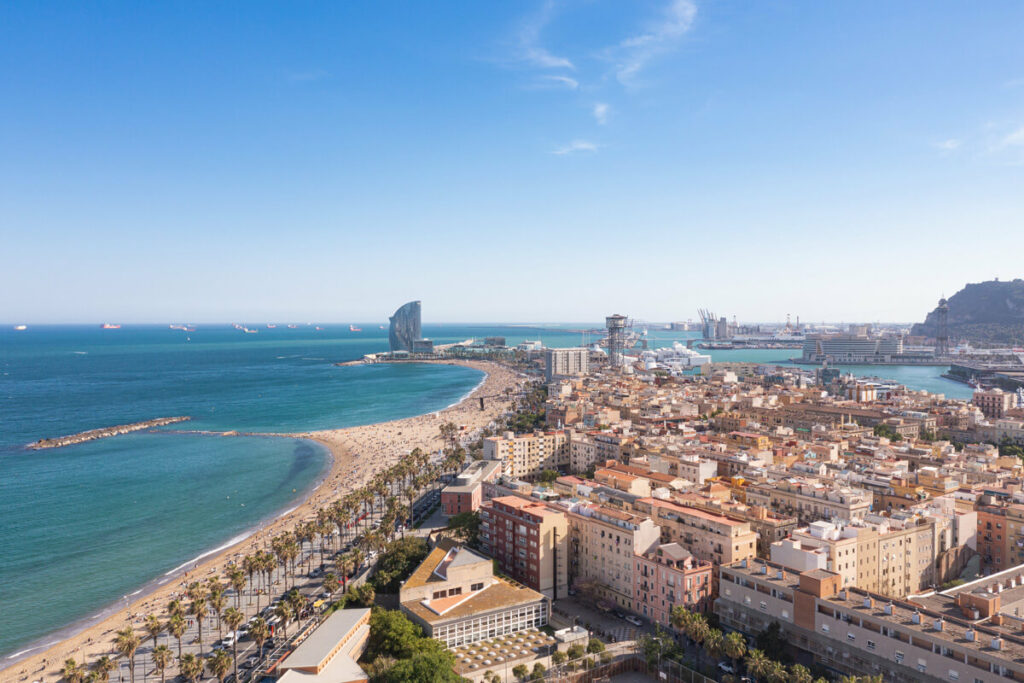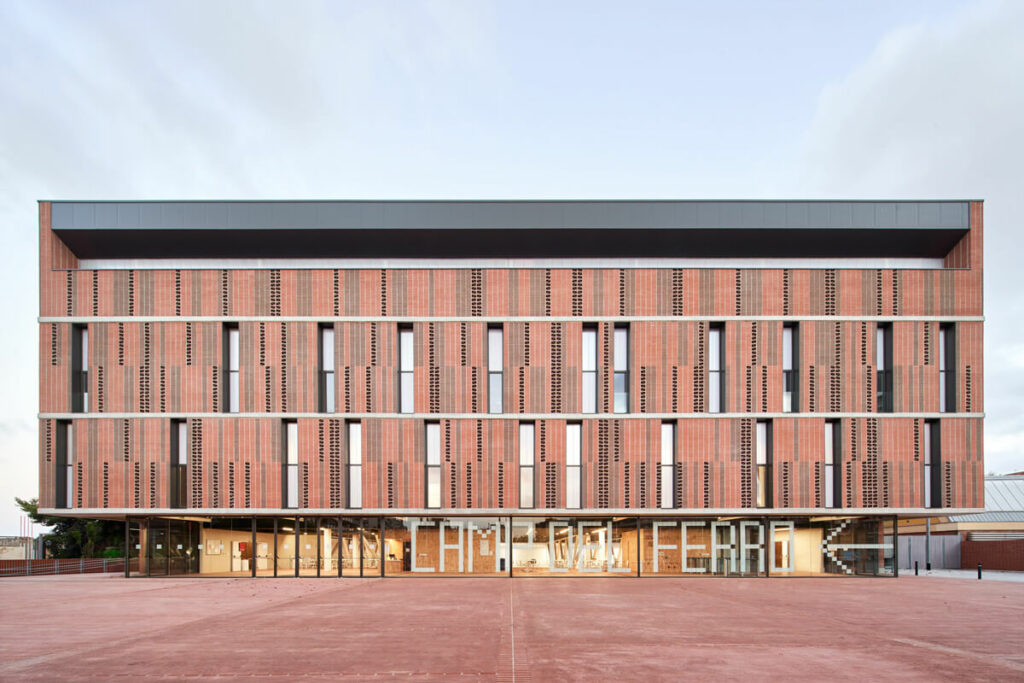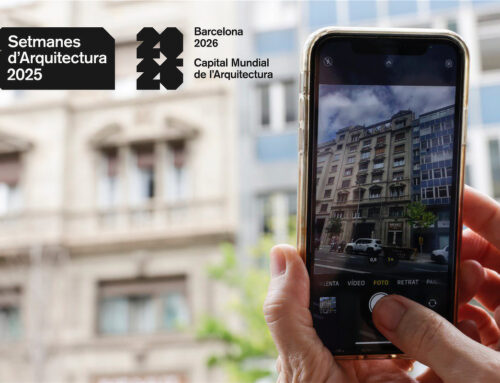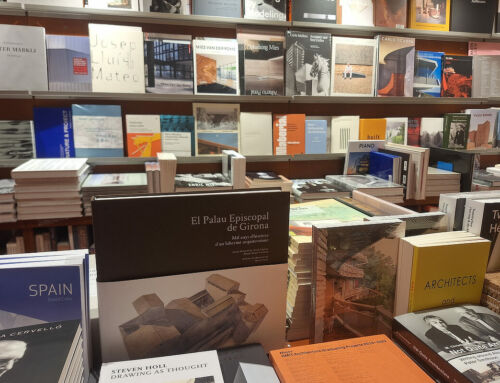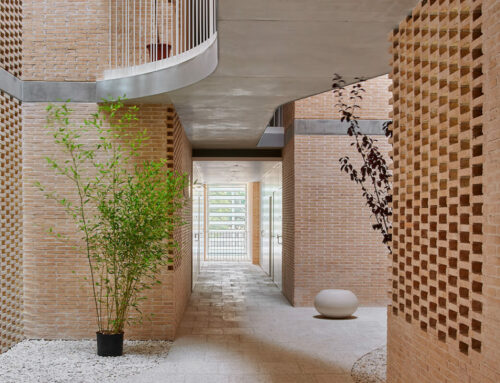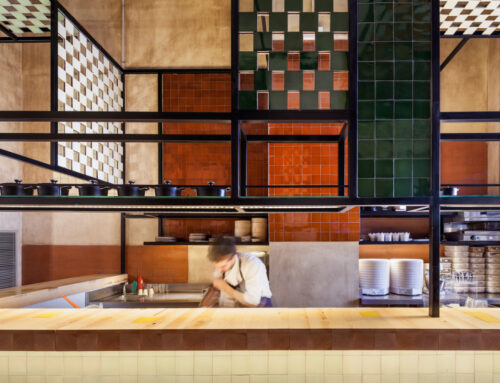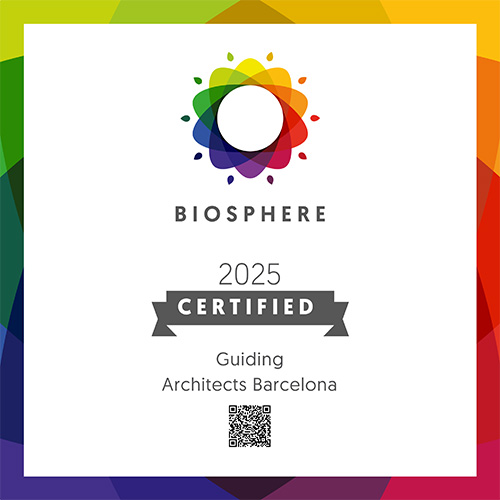Seven Reasons Why Architects and Architecture Lovers Should Visit Barcelona
Discover the Main Attractions of the Catalan Metropolis: From Its Architectural Heritage to Its Urban Landscape
1. Barcelona’s Urban Beach
The strip between the city and the sea has long since ceased to be a dividing line in Barcelona; today it runs seemlessly and is staged as a broad transition zone. Here we discover outstanding architectural works: beaches, residential areas, port facilities, promenades, urban parks, unique buildings. Barcelona lives by and with the sea.
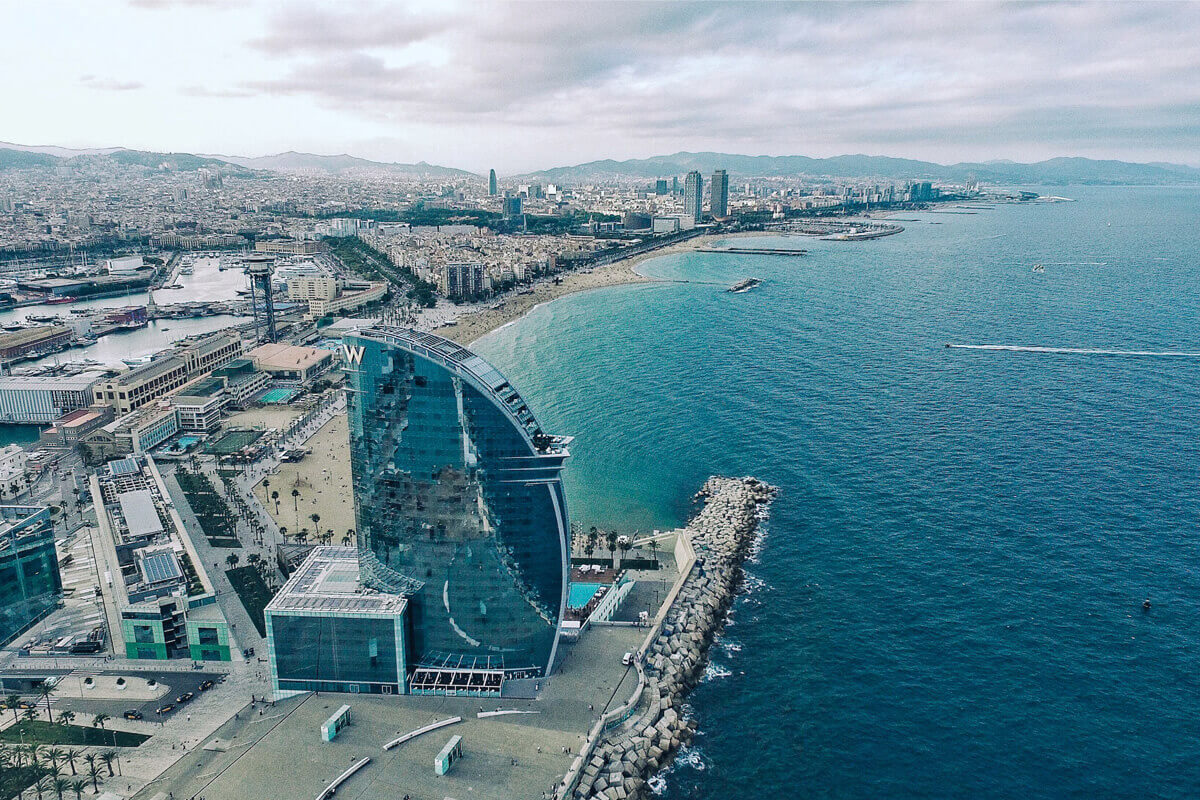
Barcelona’s waterfront and urban beach seen from above, © Benjamin Gremler/Unsplash
2. Barcelona as an Urban Laboratory
A city could not be more didactic. Because of its urban configuration with clearly defined and recognisable structures, Barcelona has always been considered a laboratory of architecture and urban planning. The urban landscape is largely characterised by the grid-like urban layout of the Eixample, with its more than five hundred equally sized blocks of 113 x 113 metres each. Based on some of the most emblematic works of Catalan Modernisme as well as outstanding contemporary architecture, design and urban planning projects, superblocks and green axes, we will observe that all rules have their exception, though.
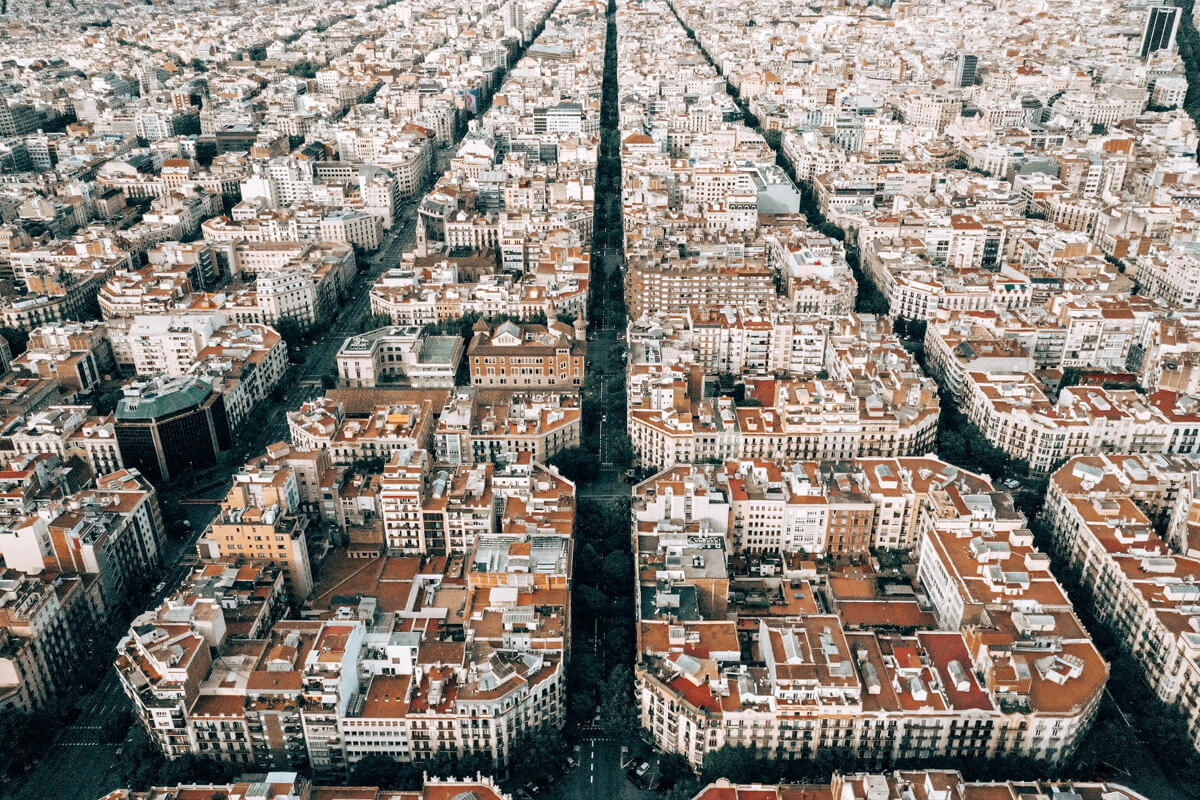
A bird’s eye view of Barcelona’s Eixample, © Kaspars Upmanis/Unsplash
3. Barcelona’s Public Space
The Mediterranean climate, the almost total absence of private gardens in the city and the high population density have created wonderful habits: public space, a territory where architecture, urban planning and landscape design converge, is lived and used intensively. Hard squares, green and shady parks, unique architecture and public art from different periods and styles alternate here. We will share our experiences in one of the countless street cafés.
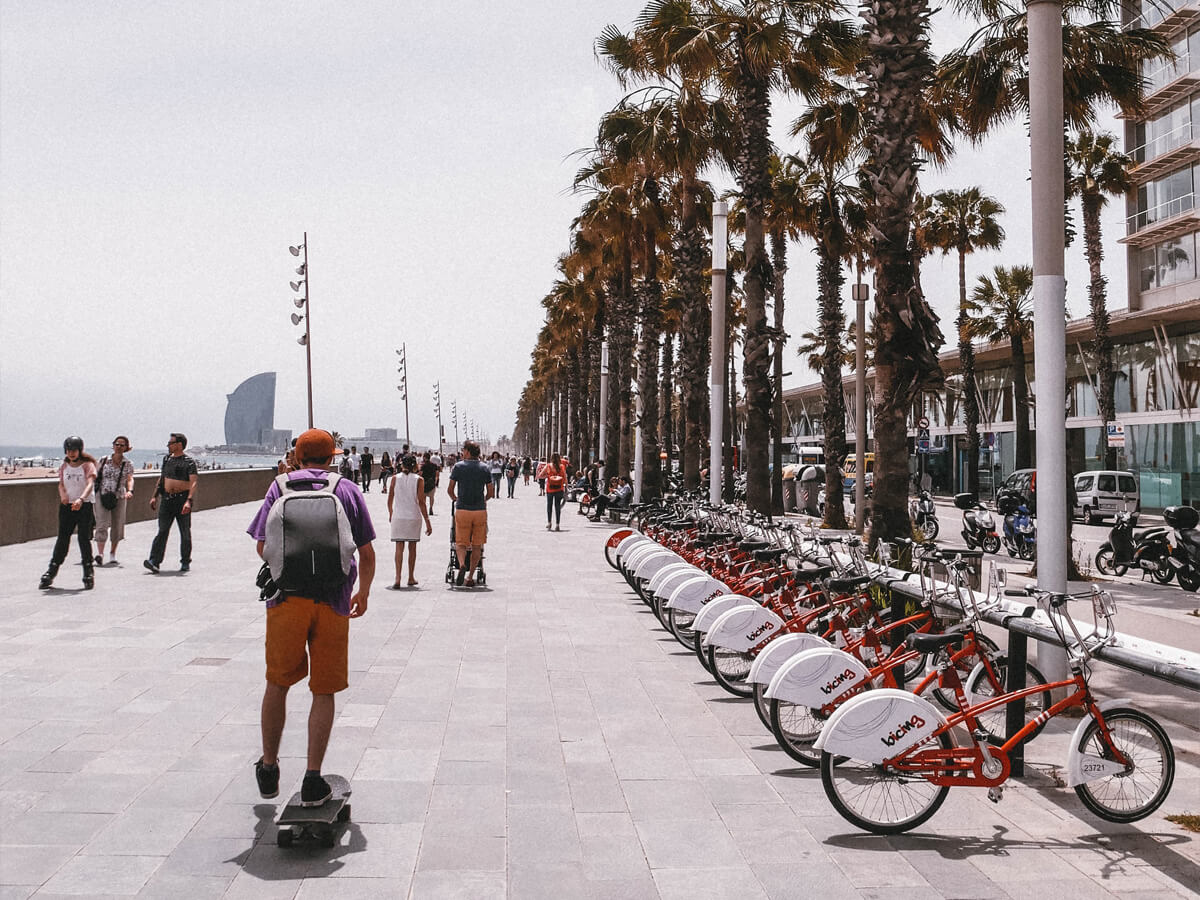
Recreational spaces along Barcelona’s seafront, © Lisa van Vliet/Unsplash
4. Catalonia’s Gastronomic Excellence
Barcelona is best enjoyed through the palate. The list of chefs and restaurants decorated by the prestigious Michelin guide is endless: Jordi Cruz at ABaC, Paco Pérez at Enoteca, Raül Balam Ruscalleda at Moments or Albert Adrià at Enigma. Of course you can also feast in the city’s authentic tapas bars, accompanied by an exquisite bottle of Priorat wine or sparkling Penedès cava. Alternatively, we go shopping ourselves, preferably in one of the 39 covered food markets spread throughout the city, such as the Mercat de Santa Caterina, designed by Enric Miralles and Benedetta Tagliabue, still hustling epicenters of local life.
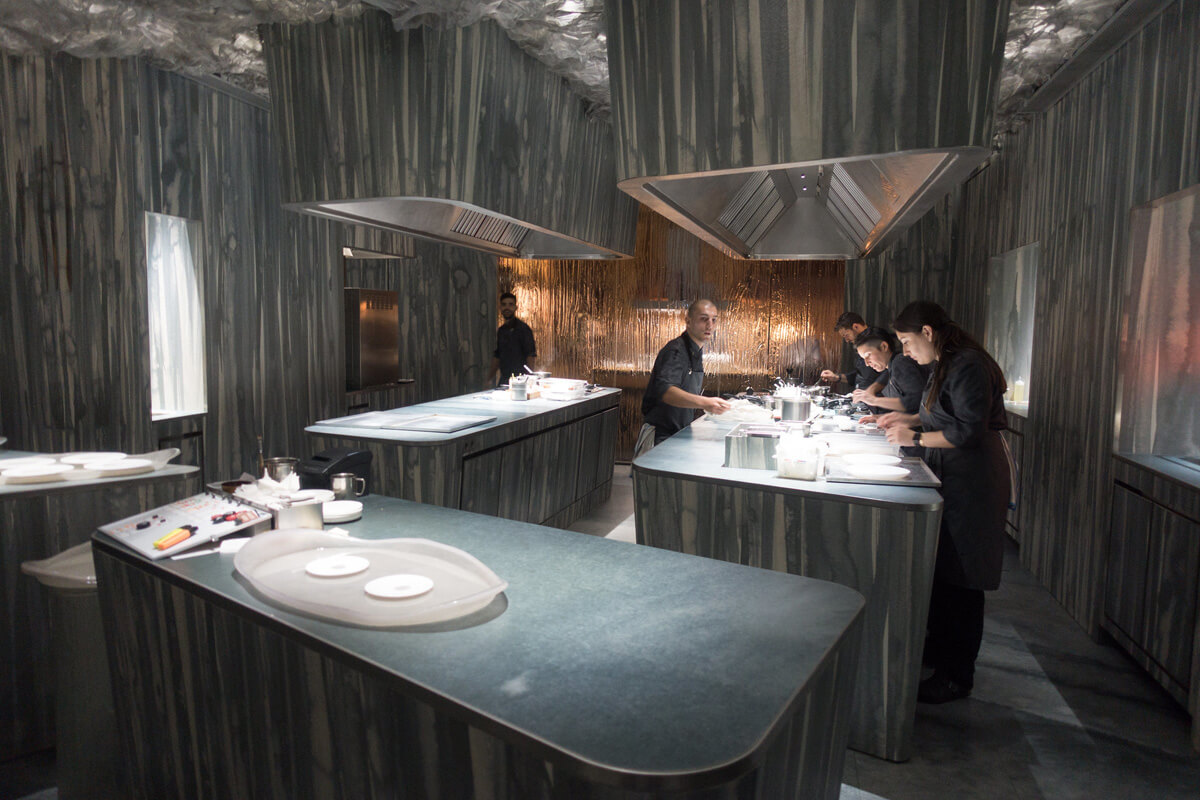
Interior of the Enigma restaurant by RCR Arquitectes, © Kent Wang/Flickr
5. Barcelona’s Modern Architecture Icons
There it is, this work emblematic of the Modern Movement, icon, pamphlet and manifesto at once, combining complexity and simplicity in an unsurpassed way: the Barcelona Pavilion, designed by Ludwig Mies van der Rohe in 1929. This building alone may be reason enough for a trip to Barcelona. Despite its small size, its architectural quality is immeasurable. At the local level, outstanding examples of rational architecture include the sculpture-like Fundació Joan Miró by Josep Lluís Sert, the serenely beautiful Casa Gomis –La Ricarda– by Antoni Bonet or José Antonio Coderch’s residential buildings.
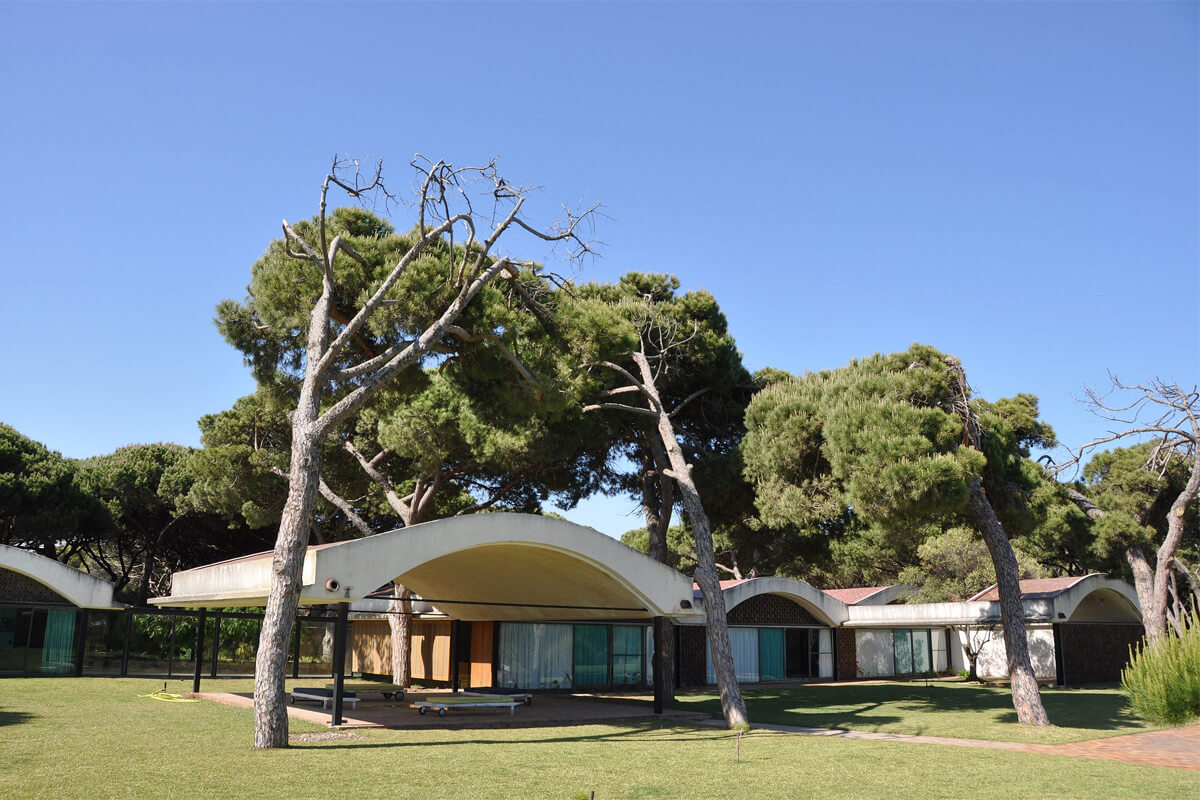
La Ricarda by Antoni Bonet i Castellana, © Josep Bracons/Wikimedia Commons
6. 22@ – Barcelona’s Innovation District
Thanks in part to the annual Mobile Word Congress, the world’s largest mobile phone trade fair, Barcelona’s 22@ technology district has established itself as a meeting place for innovative start-ups, IT giants, universities and a plethora of fresh ideas. The former industrial neighbourhood of Poblenou has evolved into a socially and environmentally sustainable district where the concept of the 21st century smart, green and inclusive city is explored and subjected to all kinds of experiments. Here we encounter the city of the future, multicultural, young, experimental and amazingly resilient.
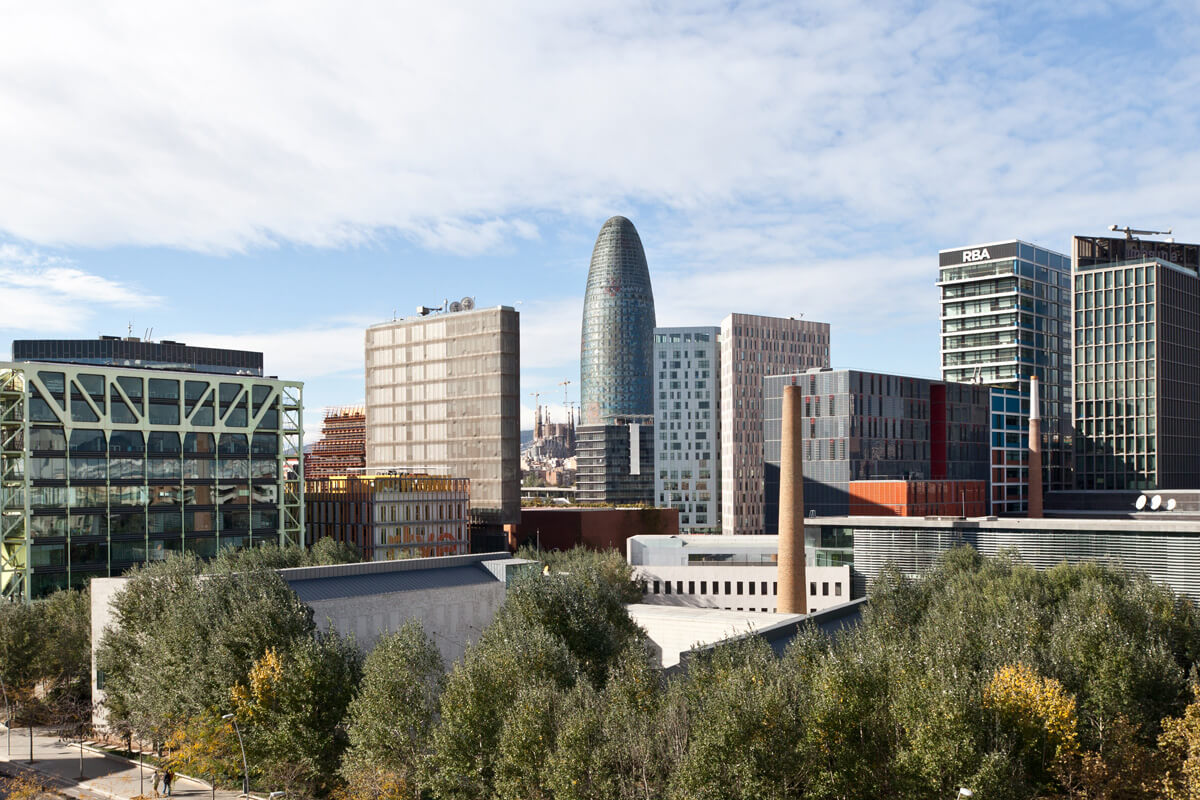
Skyline of Barcelona’s 22@ district, © Lorenzo Kárász
7. The Sagrada Família and Gaudí’s Architectural Legacy
What is probably Antoni Gaudí’s most famous – albeit unfinished – building is not without controversy. Loved, admired, hated, denied – anything can be said about the Sagrada Família, even though it is still under construction. Yet there it stands. Although Gaudí’s original ideas have long since faded into the background, his legacy lives on in the work of many contemporary architects. Scattered throughout the city, buildings by EMBT, Santiago Calatrava, Toyo Ito and Jean Nouvel take the concepts of the great master of Catalan Modernisme to the 21st century, revealing new and exciting interpretations of traditional Catalan architecture and inviting us to compare and discuss them.
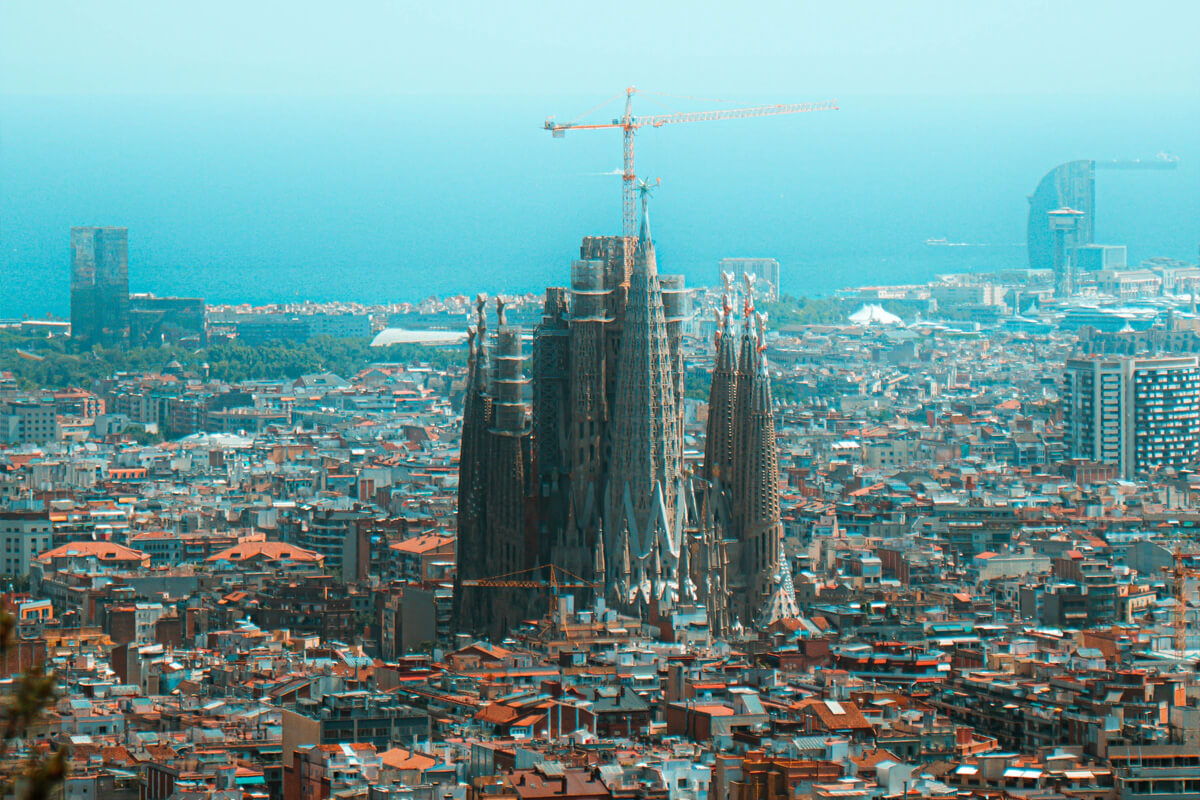
La Sagrada Familia, one of Barcelona’s most iconic landmarks, © Danique Veldhuis/Unsplash
We hope this top-7 list has whetted your appetite to visit Barcelona and look forward to seeing you around. For more inspiration and information on the city’s lesser known architectural gems, check out our architecture tours page.
Text: Hans Geilinger
Seven Reasons Why Architects and Architecture Lovers Should Visit Barcelona
Discover the Main Attractions of the Catalan Metropolis: From Its Architectural Heritage to Its Urban Landscape
1. Barcelona’s Urban Beach
The strip between the city and the sea has long since ceased to be a dividing line in Barcelona; today it runs seemlessly and is staged as a broad transition zone. Here we discover outstanding architectural works: beaches, residential areas, port facilities, promenades, urban parks, unique buildings. Barcelona lives by and with the sea.

Barcelona’s waterfront and urban beach seen from above, © Benjamin Gremler/Unsplash
2. Barcelona as an Urban Laboratory
A city could not be more didactic. Because of its urban configuration with clearly defined and recognisable structures, Barcelona has always been considered a laboratory of architecture and urban planning. The urban landscape is largely characterised by the grid-like urban layout of the Eixample, with its more than five hundred equally sized blocks of 113 x 113 metres each. Based on some of the most emblematic works of Catalan Modernisme as well as outstanding contemporary architecture, design and urban planning projects, superblocks and green axes, we will observe that all rules have their exception, though.

A bird’s eye view of Barcelona’s Eixample, © Kaspars Upmanis/Unsplash
3. Barcelona’s Public Space
The Mediterranean climate, the almost total absence of private gardens in the city and the high population density have created wonderful habits: public space, a territory where architecture, urban planning and landscape design converge, is lived and used intensively. Hard squares, green and shady parks, unique architecture and public art from different periods and styles alternate here. We will share our experiences in one of the countless street cafés.

Recreational spaces along Barcelona’s seafront, © Lisa van Vliet/Unsplash
4. Catalonia’s Gastronomic Excellence
Barcelona is best enjoyed through the palate. The list of chefs and restaurants decorated by the prestigious Michelin guide is endless: Jordi Cruz at ABaC, Paco Pérez at Enoteca, Raül Balam Ruscalleda at Moments or Albert Adrià at Enigma. Of course you can also feast in the city’s authentic tapas bars, accompanied by an exquisite bottle of Priorat wine or sparkling Penedès cava. Alternatively, we go shopping ourselves, preferably in one of the 39 covered food markets spread throughout the city, such as the Mercat de Santa Caterina, designed by Enric Miralles and Benedetta Tagliabue, still hustling epicenters of local life.

Interior of the Enigma restaurant by RCR Arquitectes, © Kent Wang/Flickr
5. Barcelona’s Modern Architecture Icons
There it is, this work emblematic of the Modern Movement, icon, pamphlet and manifesto at once, combining complexity and simplicity in an unsurpassed way: the Barcelona Pavilion, designed by Ludwig Mies van der Rohe in 1929. This building alone may be reason enough for a trip to Barcelona. Despite its small size, its architectural quality is immeasurable. At the local level, outstanding examples of rational architecture include the sculpture-like Fundació Joan Miró by Josep Lluís Sert, the serenely beautiful Casa Gomis –La Ricarda– by Antoni Bonet or José Antonio Coderch’s residential buildings.

La Ricarda by Antoni Bonet i Castellana, © Josep Bracons/Wikimedia Commons
6. 22@ – Barcelona’s Innovation District
Thanks in part to the annual Mobile Word Congress, the world’s largest mobile phone trade fair, Barcelona’s 22@ technology district has established itself as a meeting place for innovative start-ups, IT giants, universities and a plethora of fresh ideas. The former industrial neighbourhood of Poblenou has evolved into a socially and environmentally sustainable district where the concept of the 21st century smart, green and inclusive city is explored and subjected to all kinds of experiments. Here we encounter the city of the future, multicultural, young, experimental and amazingly resilient.

Skyline of Barcelona’s 22@ district, © Lorenzo Kárász
7. The Sagrada Família and Gaudí’s Architectural Legacy
What is probably Antoni Gaudí’s most famous – albeit unfinished – building is not without controversy. Loved, admired, hated, denied – anything can be said about the Sagrada Família, even though it is still under construction. Yet there it stands. Although Gaudí’s original ideas have long since faded into the background, his legacy lives on in the work of many contemporary architects. Scattered throughout the city, buildings by EMBT, Santiago Calatrava, Toyo Ito and Jean Nouvel take the concepts of the great master of Catalan Modernisme to the 21st century, revealing new and exciting interpretations of traditional Catalan architecture and inviting us to compare and discuss them.

La Sagrada Familia, one of Barcelona’s most iconic landmarks, © Danique Veldhuis/Unsplash
We hope this top-7 list has whetted your appetite to visit Barcelona and look forward to seeing you around. For more inspiration and information on the city’s lesser known architectural gems, check out our architecture tours page.
Text: Hans Geilinger




